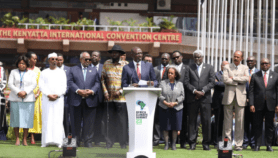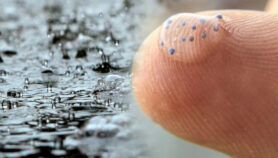By: Gina Lin
Send to a friend
The details you provide on this page will not be used to send unsolicited email, and will not be sold to a 3rd party. See privacy policy.
[BEIJING] Global methane emissions from rice paddies could be cut by 30 per cent if fields are drained at least once during the growing season and rice crop waste is applied off-season, according to a study.
Methane is a significant contributor to global warming and is produced by certain types of bacteria in oxygen-deprived environments — such as those feeding on the organic waste in water-covered rice paddies.
"Draining allows organic material to decompose aerobically as it is not covered by standing water," says Yan Xiaoyuan of the Institute of Soil Science, Chinese Academy of Sciences, who led the study.
The team says that if draining is combined with applying rice straw — the stem and leaves left behind after harvesting — methane emissions could be reduced by 7.6 million tonnes a year, representing around 30 per cent of global emissions from rice fields.
Rice straw is traditionally either burned between growing seasons or ploughed back into the soil as a source or nutrients for the next season’s crop. When the field is reflooded, microorganisms feeding on the rice straw generate methane.
But if the straw is left to decompose in the open air of a drained field during the fallow season, methane emissions would be reduced, say Yan and his colleagues, and the rice straw could still supply some nutrients to the soil.
Both technologies have been adopted sporadically across the world to reduce methane emissions, but this research is "the most updated of its kind", according to Reiner Wassmann, coordinator of the Rice and Climate Change Consortium at the International Rice Research Institute.
Stanley Tyler from the US-based University of California, Irvine, told SciDev.Net: "Flooded and rain-fed rice paddies are one of the few wholly man-made methane sources and potentially one of the best chances for humans to control methane emissions."
Wassman cautioned that the feasibility of the approach had yet to be tested, as there had not been any "outscaling" from experimental fields to farmers’ rice fields.
The study was published last month (April) Global Biogeochemical Cycles.













